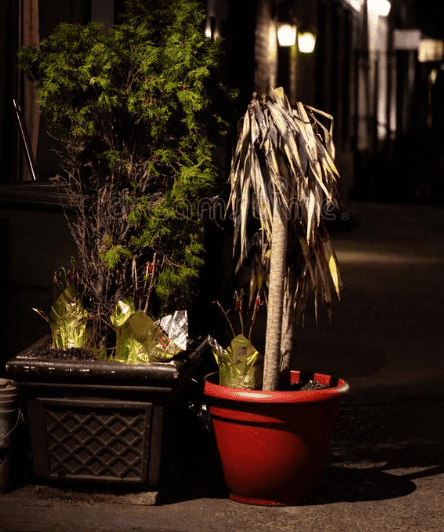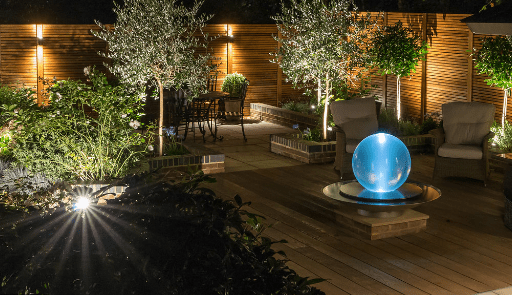
If you are too busy during the day or the plant cannot tolerate the light conditions during or after the transplant or repotting, planting at night may be a smart option.
Plants will be better able to handle the damage they experience during transplanting or repotting and adapt to their new surroundings if they are planted at night. At night, the weather is cooler and more humid, which helps plants resist stress and avoid withering or even death.
You will have a better grasp of the reasons why planting at night will aid in plant growth, the conditions required for them to do so, and concerns around planting at night after reading this article.
Table of Contents
Will Plants Grow Better When Planted at Night?
The absence of light drives plants to develop more quickly at night than during the day, hence plants sown at night will thrive.
The plant’s phytochromes won’t be able to detect any light at night, which increases the release of growth hormones, which causes the plant to elongate in quest of light.
Now that you are aware that you can plant at night, you must also comprehend why doing so is preferable than doing so during the day.
First off, there is no sunlight, unpleasant winds, and too much heat at night. A plant may undergo seedling shock if it receives more water than it need.
This is the rapid collapse of seedlings that occurs after they are potted and is brought on by changes in the temperature of the environment, wind, and water.
Because they will be less stressed by heat and water, it is preferable to put your seeds at night when temperatures are a little cooler.
For seeds to germinate, the soil must be warm and moist.
There are three ways that temperature impacts seed germination:
- Moisture,
- hormone synthesis
- activity of enzymes.
Temperatures are higher during the day than at night.
Increased soil evaporation caused by higher temperatures can cause the plant to have insufficient hydration, which will hinder plant or seed germination.
Additionally, fragile roots that shouldn’t be exposed to direct sunlight throughout the daytime may be harmed.
The reasonably priced Trazon Soil 3-in-1 Meter can be used to measure the soil’s pH and moisture content. It checks the pH as well as the amount of moisture and light. Clicking here will take you there!
Is it Good or Bad to Plant at Night?
If you’re a gardener, you might be unsure about whether it’s best to plant your plants at night or during the day.
Planting at night is always a nice and secure idea. As was previously mentioned, temperatures are lower at night than they are during the day, which slows the rate of evaporation and reduces moisture, both of which are necessary for seeds to germinate successfully.
Most plants do, in fact, grow more at night.
When a plant is planted at night, it has the opportunity to adjust to its new surroundings before being exposed to sunlight the following day.
The plants will have plenty of time to adjust to their new surroundings throughout the night when it is cooler before the climate changes during the day when sunlight is present.
One thing to keep in mind is that artificial lighting at night can provide some issues.
When exposed to porch lights for an extended period of time, plants may get leggy and begin to lean and grow toward the light.
This is why it’s important to provide indoor plants a variety of illumination.
It’s important to give balanced illumination, and we’ve located a reliable artificial grow light on Amazon that does the job by offering the proper spectrum of light. Clicking here will take you there.
Can Planting at Night Prevent Seedling Shock?
It is best to plant at night to reduce seedling shock. When seedlings are transplanted, they may suddenly collapse.
The temperature, water, and soil conditions in the area alter as a result of this.
When seedlings go through this shock, it might have a negative impact on their growth for two to three weeks.
There is a good probability that the majority of your seedlings will experience seedling shock when you transplant them during the daytime when there is direct sunlight, wind, and sunlight.
In the absence of the above-mentioned excess conditions, seedlings should be planted at night.
Fortunately, after undergoing seedling shock, the majority of seedlings bounce back. By examining the leaves, you can determine if your seeds are in shock.
When a plant has seedling shock, it may exhibit withering or dropping leaves, dying branches, sudden loss of blooms or fruits, or it may even perish.
How to Avoid Transplant Shock
- Plant or move seedlings when the soil temperature is greater than 50 degrees.
- Make sure the seedlings we are sowing are in good health.
- cautious plant watering
- understand when to plant
- transferring without upsetting the roots
- As many roots as you can, remove
What is the best time of the day to transplant?
First of all, what exactly is transplanting? This method involves shifting plants with new soil media from one place to another.
From the place where they were first sown as seeds to the location where they must develop into mature plants. This is possible both during the day and at night.
But what time of day is ideal for transplanting?
The aforementioned query has two possible solutions.
For best results, transplant surgery can be performed in the early morning or late at night.
Always choose a transplant procedure that takes place in the cooler morning or evening hours.
You can transfer seedlings in the evening so they will have the entire night to adapt to their new habitat before sunrise.
Additionally, transplanting is best done in the early morning or late evening to avoid exposing the delicate roots to direct sunlight.
The delicate roots may be damaged by direct sunlight and may not thrive when exposed.
What do plants do during the night?
At night, plants absorb oxygen and exhale carbon dioxide.
The term “respiration” refers to this procedure.
However, some plants can engage in a type of photosynthesis known as crassulacean acid metabolism, which allows them to use carbon dioxide at night (CAM).
As an adaptation to arid environments, certain plants developed a carbon fixation mechanism known as crassulacean acid metabolism, or CAM photosynthesis, which enables a plant to synthesize throughout the day but only exchange gases at night. [Source]
The CAM process is used by most cacti plants.
What happens if you plant and water the plants at night
It’s generally acceptable to plant and water plants at night. After planting the plants, you should water them, but you must be very careful not to moisten the leaves in any way.
This could draw fungus. Drops of water remaining on the leaves prevent them from drying out at night because there is no sunlight.
The leaves are believed to be wet when this happens. These damp leaves, however, become more susceptible to the growth of fungi.
Given how important leaves are to plant growth, this will be very bad for the plant. When you choose to water the plants at night, you should exercise extreme caution.
Make sure to water the plant at the very beginning of the stem, which is closer to the ground, to avoid all these problems.
You might also think about adopting the bottom-watering technique, which effectively moistens the entire soil mass while guaranteeing that the plant doesn’t receive more water than it requires.
The Takeaway
As was previously mentioned, it is often advised to plant seedlings at night when there is no direct sunshine, high winds, or other unfavorable weather conditions that may influence the seedlings when planted at night.
If you are busy during the day, this may also be the greatest time of the day to accomplish it.
Remember, as we’ve seen, it’s crucial to use caution when watering the plants you’ve planted at night.
If necessary, you will need to water them with extra caution to prevent the growth of fungi that could damage your plants’ leaves.

FAQ
What time of day is best to plant?
Early in the morning, late in the afternoon, or on a cloudy day are the best times of day to transplant. The plants will be able to settle there out of the sun as a result.
What time should you start planting?
You should start indoor seedlings for the majority of crops six to eight weeks before the last spring frost date. In the Midwest, you should start your indoor seedlings in mid- to late April. Plant your indoor seedlings in February since that is when the final frost in the South can happen.
Can you plant plants in the night?
Planting at night is always a nice and secure idea. As was previously mentioned, temperatures are lower at night than they are during the day, which slows the rate of evaporation and reduces moisture, both of which are necessary for seeds to germinate successfully. Most plants do, in fact, grow more at night.
Is it OK to garden at night?
You and your plants will both be better able to endure the summer heat if you garden at night. You will avoid heat exhaustion, dehydration, and sunburn since it will keep you in lower temperatures and out of the sun.
Is it OK to plant flowers at night?
Some flowers grow better when planted at night, even though most flowers benefit from temperatures in the early morning or the late afternoon. Some flowers should preferably be planted at night in the darkness of the moon, similar to the situations surrounding the Dark Moon phase.
